
I don’t mean to sound condescending toward the folks at Nordic Hardware with my title. First, the story: the Samsung Galaxy S II’s GPU doesn’t allow users to run anything at refresh rates greater than 60 frames per second. Boohoo. Since when was 60 frames per second a bad thing? Any graphically demanding game running at 60 frames per second is great, and the overall feel of the OS benefits from it too. But do folks really want or need more?
The argument against 30 frames per second was justified. I experienced the limitation first hand on several HTC devices of yesteryear, including the HTC EVO 4G. Developers eventually got around that and delivered 60 frames of goodness per second to all. I was very pleased, impressed, and satisfied with how much snappier it made devices feel (even if actual device performance wasn’t getting a boost). To this day, I remain satisfied. Many others do, too.
What is the point of going further? In 2D and 3D graphics – especially for phone UIs – there is no real world advantage to pushing out as much as you can at the highest framerate. Overall performance can suffer the higher you try to go because your GPU and CPU have to work harder to display a moving image just a bit smoother than what is recognized as the industry standard. Yes, folks, the Mali 400 has a locked frame rate, but you’re likely still going to buy this phone the moment you get a chance. [Thanks Anton!]



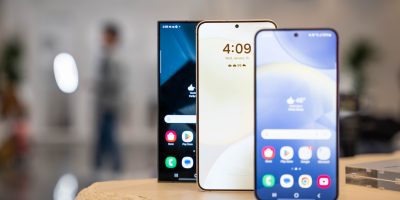
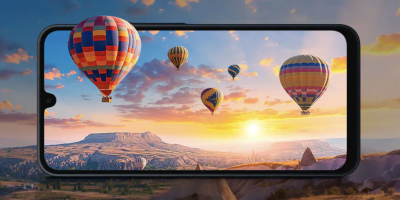

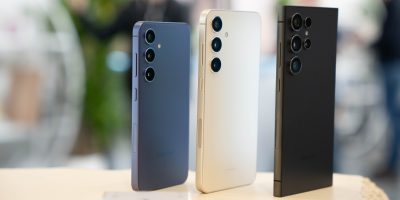

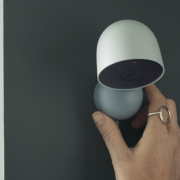
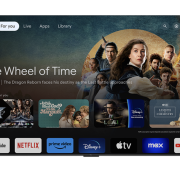

What’s the point of all that gpu power if your not able to use it? You would be better off with a less powerfull more efficient gpu with the same performance. And what’s with the authors attitude? What are 12? Chill out
The point of the more powerful GPU is that in 3 months, it is still relevant. When games are more complex, the GPU is capable of displaying them at a decent refresh rate.
Still relevant to do what? Play Angry Birds and Fruit Ninja? The games on android suck ass. If and we we start getting the same caliber of games as iOS, then a blazing fast GPU might matter.
The screen can’t show you more than 60 frames a second. It would be a bad design decision to enable more FPS.
No it can’t. but in games a higher framerate will give much smoother gameplay,
In a game like Nova 2 for example it will make the aiming more responsive and fluid.
No, it won’t.. how would it? You get the smoothest animation when the FPS is equal to the screen refresh rate. Rendering frames that the screen never displays won’t make anything more “fluid” or “responsive”. And I’m not sure what you mean by “improved performance”.
Have you ever played a game on PC and tried games at higher than 60fps on screen with 60hz? do you actually have any experience with this? because it appears you don’t.
Yes, I do. I’ve actually developed a few 3D games myself. But I’m open to anything: please explain to me, how will frames that are not displayed at all make the game run smoother?
I prefer 100-120hz refresh monitor and no framerate cap. I used to use that for competitive PC games.
do you know what 60Hz refresh means… it means no matter what the monitor itself is not capable of DISPLAYING more than 60fps, sure the hardware can render more but its pointless unless your display is faster. which it defiantly isn’t going to be in a phone for quiet a while.
*screen tear*.
Well I don’t make games, I play them competitively and have done for around 15 years. There are benefits to having more than 60fps on a 60hz display, I never play with v-sync enabled as controls lag and feel less responsive.
If you still don’t understand use google, this has been discussed to death.
@sQueezedhe
Screen tearing can be an issue, but not always.
The screen only refreshes at 60hz, so anything above 60fps is a waste of resources.
60 fps on 60hz screen, it’s just normal, vertical synco is cool ! Thx for our battery !
Actually, an FPS going above the screen’s refresh rate is a BAD thing. It produces less smooth animations and it wastes battery calculating frames that you don’t even see.
That, and the screen tearing. Screen tearing drives me nuts and looks bad. Although, I AM curious to see how many FPS the Mali 400 would get if the cap were removed versus the Tegra 2.
Thats all we want Stephen, being able to compare these two GPUs apples to apples. Not apples to pears.
We dont need 60+ fps, but we need a way to test the long term performance of these phones. I’m honestly a bit surprised that not more people realize what where after here :)
The issue here is not why can I do it, but why can’t. Sooner or later a ROM will come out that will remove the limitation. The folks at this benchmark site just wanted to point that out. Also if the phone has this barrier set, how high does it really go and will it crush anything that is currently available or will be available in the next 6 months. For the average user, yeah who cares, but for those that want to show of the phone’s potential the limitation is but a barrier that will be broken soon enough.
Did you know that the original Galaxy S had an FPS cap too? Never heard anyone complain about it though..
One of the reasons why I said the average user, would not complain because they don’t or wouldn’t care to tweak their phone. On the other hand, a person like you or me or many other phandroids here wouldn’t mine showing off a benchmark that gives high marks on a phone that would be leaps and bounds above everything that is available or that will be available in the next 6 months. Yes the screen does not display anything pass 60 fps, but is the ability to still do it that intrigues people and wouldn’t you be intrigue as to how powerful this phone really is.
Maybe it’s time to retire Neocore as a benchmark, as it’s not stressful enough.
The Nexus S is also frame capped, why didn’t you include that?
Who cares? I dont. Both these phones are on my wish list, and I feel you cant go wrong with either.
And since the bootloader wont be so locked down, the cap should only apply to ppl that can do something about it.
This may be a stupid question, but how many games are going to be running at that frame-rate anyway? The S II has great specs sure, but good enough to run the high end android games at 60 fps?
…the point I’m getting at is I agree with Quentyn on this one, a “limitation” such as this isn’t going to matter to anyone with some common sense about them.
Considering it’s probably the fastest GPU around, chances are it will reach that kind of FPS on many high-end games designed for slower GPUs (Tegra 2) I agree that capping the FPS to the screen refresh rate is a good thing in real-life usage as it’s saving battery life and giving you an overall better picture. Having a way to lift this cap for benchmark purpose would still be nice though in order to better compare performances from this GPU to others on the market. As a PC gamer, I’m used to comparing solutions from different vendors in order to choose wich one will give me more long-term benefits as I can’t afford to change my hardware every 6 months.
Dumb question. It’s purpose is to make benchmarks SING. With how enamored people are about benchmarks, this is the SOLE reason why. Quit beating around the bush and acting dumb. That quadrant score would be higher if the cap was lifted. Most graphic benchmarks that compare framerates would be much higher if it didn’t get stuck on 59.88989897 fps.Playing a game smoothly is not important. Knowing that your phone can achieve twice the framerate as the next guy is of paramount importance.
Samsung should have put an option in the settings to disable the frame cap. Hell, all the other manufacturers should do that. If you have a killer graphics chip, you want as much free PR as you can get. Very dumb of them to not have that option. With Android games more or less playable even with last-gen graphics, the new chips can only shine when it comes to the numbers game and pushing benchmarks that exploit the hardware but won’t show up in real games until much later.
This is evidence that we need better benchmarks, not uncapped frame rates. Also, the best review of hardware and benchmarks on the web is at anandtech.com, you’ll know how great this phone is after they review it. Any noob that doesn’t understand because their quadrant score is nearly identical doesn’t deserve the breath you’ll waste on them anyways.
Anandtech ….love that site. I based my last 2 PC’s on his reviews of cpu chips.
And thanks to Anandtech I didnt feel the need for a quad core PC until now.
You are willing to kill your battery and cpu/gpu faster so you can win a pissing contest? Childish traits like these are why people in general have such false sense of superiority. Then when you overwork your electronics, you will go cry about how they need to make things last longer.
Difference between this device and HTC device it’s that the bootloader won’t be locked down, so this limit will be “fixed”.
there is no need for that, the screen got 60hz => wouldn’t help anything !
Why do you think I put quotes around fixed? I am saying there is no need to do this.
we can still uncap hdmi out you guys forgot about the little suprise in the usb port
You actually want your refresh rate and FPS to be the same ideally. If your screen refresh rate is 60hz, ideally your game, UI and app rate should be 60fps. If it is greater you get overdraw which is wasted CPU cycles. Also the human eye can’t tell the difference between 60fps and 120fps. Anything over 60 is an all around waste.
Wrong. Read this: http://amo.net/NT/02-21-01FPS.html
If you don’t want to believe it, just Google “why fps matters” or “why frame rate matters” and read the numerous other sources for yourself. And if you’ve ever played a first person shooter video game at 60 fps and at 120 and above, you can most definitely tell a difference. See an FPS comparison for yourself: http://www.boallen.com/fps-compare.html
your examples proves the point that above 60 makes no difference. below 60 most certainly does but once you hit 60, that is the rate your eyes flicker at so it is impossible to detect more because your brain really is taking pictures 1/60th of a second so it doesn’t matter how many FPS you cram into every second… your brain is still only going to see 60 of them. unless your pumped up on adrenaline then it is somewhere around 90… (this is why things seem to slow down when we are surprised, its our brains way of comprehending 90 photos in the same time it typically sees 60)
You’re an idiot. The human brain cannot discern anything above 60fps. It’s a biological fact. Anything above 60fps is overdraw for the CPU and a waste on the user experience. The reason you want a GFX card to run a game at 200fps is because when it gets taxed it only drops to 150fps, instead of 30fps. 150fps looks the same as 60fps to your eye and brain, but 30fps is immediately detectable by your brain as being inferior to 60fps
You are the idiot. If you do some research you’ll see that the human brain
can and does very well see more than 60 fps. Do some research before you
just blurt out something you heard somewhere.
I actually wish they had put a framerate cap on StarCraft II or my PC graphics card so it wouldn’t have overheated.
the human eye can’t register anything faster than 60Hz anyway, there is no point going above 60, ever, its all in your head. look at a helicopter, tell me if you can actualllllly follow the blades rotating around… you can’t it looks the way it does because you can’t register more then 60Hz
this will end up saving battery and that is a good thing, anyone who “unlocks” it is just being stupid, there is no gain except for what you “THINK” is better preformance
60 Hz is an excellent norm, but there’s not a hard stop there for everyone’s flicker fusion threshold.
Aside from that trivia, I’d prefer a 72 Hz refresh rate on screens for when I’m around fluorescent lights at 60 Hz. I experienced more relaxed eyes when CRT monitors came out that way some time back.
That’s a common misconception. Watch a 60hz TV and then one at 120, then at 240. You’ll be able to see the difference every time.
Read this too: http://amo.net/NT/02-21-01FPS.html
and after Googling “fps comparison” http://www.boallen.com/fps-compare.html
notice how all of those are multiples of 60Hz? the actual frames themselves are more nicely transitioned but ideally you could have the same visual on a 60Hz if it is good enough quality
my post was about 60 FPS not making a difference… which still holds true.. your saying we can detect the difference between 30 and 60, yes we obviously can because like i said, our eyes register 60Hz, so anything up until 60Hz or 60FPS is distinguishable but anything above that is not.
You can also detect over 60 as well. I’m not saying the phone absolutely
must be allowed to go over 60 fps, I’m just trying to put to rest that “the
human eye/brain cannot detect the difference in x fps”
Some of the comments here crack me up! Suddenly everyone is an electrical engineer and know every nuance about frame rates! ROFL Stop trying to sound smarter than you actually are….it’s 2011, we’re all well aware of how to use Google at this point.
You win the thread.
Or in contrast I’m a computer hardware nerd who knows how to get the best out of my rig and in my research have determined the human eye can only see so fast so there is little(no) reason to surpass the eyes ability at this time
in contrast you have no idea what you’re talking about, because plenty of people can see faster than 60FPS. Also it affects being able to accurately benchmark the product if it’s being limited artificially. Makes it even harder to say “this product is better than this by a %age, see the benchmark”.
As the author of the original article at NordicHardware I would like to point out that the subject of the article wasnt to complain about loosing 60+ frames. In real use 60+ fps isnt needed but thats totally besides the point.
Some of the earlier commenters was on target and also Joedon3. The point is that some people will buy a smartphone cause it has 200 points more in Quadrant than the other. If that difference really is a placebo effect from a lower V-sync then thats something consumers should be aware of.
And as said, those 60+ frames isnt that interesting today, but in i a few months time that extra performance might be what gets you trough the latest Android Games without stutter.
These where the reasons we published some of our results before the complete review and though I’m happy Phandroid picked up on the news I feel its been wrongly scewed. It might be a bit hard to get from the google translation, but its all about letting consumers know not to do all their deciding based upon badly detailed system benchmarks.
/Anton
Then the problem is that Quadrant is designed wrong. It should calculate the number of shaded triangles per second that can be rendered at X fps, not the other way around. X should be set at 30 probably to cater to the lowest common denominator hardware.
Still the easiest way would be to let at least media de-activate the v-sync. I can almost guarantee that NVIDIA with its great experience in benchmarking wars have something to do with the higher refresh cap on Optimus 2X. They knew that a lot of benchmarks wouldnt stop at 60 fps and this way they can even win benchmarks without having the fastest GPU, IF the reviewers doesnt explain whats happening (which is what we’ve tried to do. :P).
I’m not pointing any fingers at NVIDIA as I just think that all manufacturers should allow higher fps or a switch for v-sync in Android. Could be in a service menu or whatever, just as long we can do proper performance comparisons for those consumers that plan on using their phone more than a few months and want performance that they can grow with.
I totally understand. From what I gathered from the Google Translate version of your story, it didn’t sound as if you were smashing Samsung for locking their GPU to a certain framerate. I was really speaking to all the benchmark buffs out there who will instantly dismiss a phone based on its framerate. I’ve seen it happen far too often with HTC’s earlier phones and I just felt the need to slap those people on their wrists. Again, no disrespect or disrespectful tone meant to you or Nordic Hardware. (That’s why the first sentence is there, haha. Supposed to be a bit of a disclaimer.)
-Quentyn
Everyone knows (or should…at least on this forum) that quadrant scores mean squat when it comes to real world performance! So if you’re stupid enough to purchase a device based solely on quandrant scores, well….need I say more?
This is idiotic. Just because quadrant isn’t real life scenarios doesn’t mean it doesn’t help to gauge one phone’s performance versus another.
If your car says it has 160HP and another has 240HP, that’s a synthetic benchmark – yet people rely on this for their purchasing decisions, as Anton has indicated.
You can tell diffrence if its 120 fps if its on 120hz refreshrate screen no tearing no crap proof ? http://event.asus.com/LCD/2010/VG236/ choose blazing action demo so you can see the diffrence between 60hz and 120hz which can display more fps on screen. I have the screen I can tell the diffrence 60hz capped fps and 120 hz 120 fps .
anyway 60hz 60 fps it dosent matter its actually better no tearing no bs, gonna order from amazon uk either way lol saw a youtube video its actually quite fast.
FPS DOES MATTER!!!!
Quentyn, I like you, but you need to educate yourself. EVERYBODY ON PAHNDROID should read this:
http://amo.net/NT/02-21-01FPS.html
Still a sick phone though. I just wish it had a qHD display.
I didn’t say framerate doesn’t matter, I said anything over 60 is overkill. And that is 10x truer for a phone.
That’s EXACTLY what people said about computers. Look where they are now. 60 is definitely not overkill. Anyone who has played a first person shooter knows that 60 FPS vs 100 and even 150 FPS makes a big difference, and is easily noticeable to the human eye. Definitely NOT overkill. And not 10x truer for a phone. Now, a phone probably doesn’t need 300 FPS, but there’s no reason to cap it at 60.
Yes.. but on computers you have screens with the refresh rate of 100+ Hz… there is simply no need for going overboard with a 60 Hz screen. 60 FPS is more than enough. You’re not playing Crysis on it.
Yeah, like we are suppose to believe some random website, with no credentials, or citations, or sources, or data. Not to mention the fact it looks like it was written in pure HTML…
Seriously is that a joke? You cannot be serious. So the guy who wrote it made it up then? What for then did he fabricate that 2 page piece for? He just made the entire thing up just FFS? You
pure dumbshit, you didn’t even read it – yet you’re trashing it. I guess a 2 page piece is too long of a read for an idiot like you. And the fact that it “looks like it was written in pure html”. Only idiots judge a book by its cover. And if you don’t like that website, why don’t you do some research for yourself and learn something instead of just bashing others. Just Google “why fps matters” or “why frame rate matters”. But that would be too much for an imbecile like you. You’d rather just run around parading and bashing people. And if you don’t have the attention span to read anything of more than a couple short paragraphs, at least look at this, it will take you 15 seconds: http://www.boallen.com/fps-compare.html
the qHD display won’t bring anything new, AMOLED qHDs would be nice, but it’s not necessary atm. The SAMOLED+ screen is still better than any qHD LCD display built. Next AMOLED from Samsung will be a higher resolution, due to new laser printing of the screens, can’t wait.
I’m not bothered about gaming performance, 60fps is fine. But I would like to see how these devices really perform and that’s not possible with a framerate cap.
It makes graphics benchmarks kind of pointless.
its the same as vertical sync on a pc game it actually prevents tearing and other bad things from happening to the video. al the human eye supposedly only can see arround 30-45fps anyway (dont remember where I read that) but 60 fps is very fluid its a waste of cpu and gpu resources to go higher even in pc games. a true test would be seeing how many polygons can be rendered on the gpu @ 60fps
The human eye can definitely see more FPS than most people think. It’s become a common misconception that they can’t see anything over 30-45 FPS. See http://www.boallen.com/fps-compare.html and http://amo.net/NT/02-21-01FPS.html
Mali is new platform. Developers have to learn to code games for it. Adreno, PowerVR, Geforce ULV and now Mali-400. Galaxy S and Nexus S are also capped.
Probably a dumb question.
If my tv is 100Hz and I would wish to play a HD movie on it using a SGSII, would it be a problem?
As it is apparently limited to 60fps (=60 Hz right?)
Well you don’t get video above 60fps anyway. The source video is more likely to be 30 fps!
45 fps is good enough for me
Artificially setting a limit on performance is never a good idea. Nor is fanboyishly defending it like its a great idea.
Samsung ruined the Galaxy S with their stupid laggy file system – they are ruining this one by capping the frame rate.
if it were any other phone you all would dismiss this phone as wack, but everyone of you most likely sleep with pictures of this fag phone, just shut up and buy a g2x. you all sound like idrone boys
You can easily tell the difference visually between 120fps and 60fps despite what some people will tell you. Go find a Samsung 2233rz LCD (it’s 120hz to support 3D) on display and switch it between 60hz and 120hz while moving something around. You’ll be surprised how easy it is to notice. It’s obvious in games as well, but less pronounced if the action on screen is chaotic.
Capping FPS is something that should be up to the application and user (like it is on PCs), not the OS. If you want to trade smoothness for battery life, that’s your choice to make, not the manufacturer’s. It should also be up to the application to avoid compromise in critical portions, like as a programmer I’d want to render UI animations at > 60 FPS even if gameplay FPS was requested to be capped, so I’d be rather pissed if the API was capping performance behind my back, and really pissed if it was implementing this by putting a sleep in calls to swap buffers which could cause responsiveness problems in my app if I didn’t plan ahead for it doing that.
Nice, my DHD with 2.3.3 official rom scores 58.7 !!! Better than the Samsung Nexus and almost good as Samsung GSII